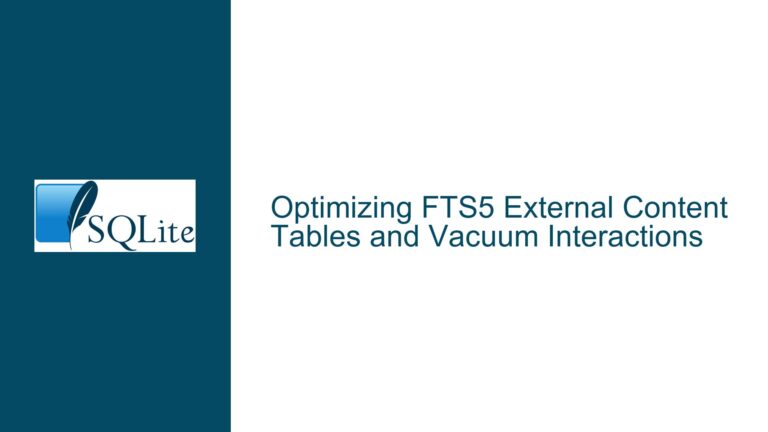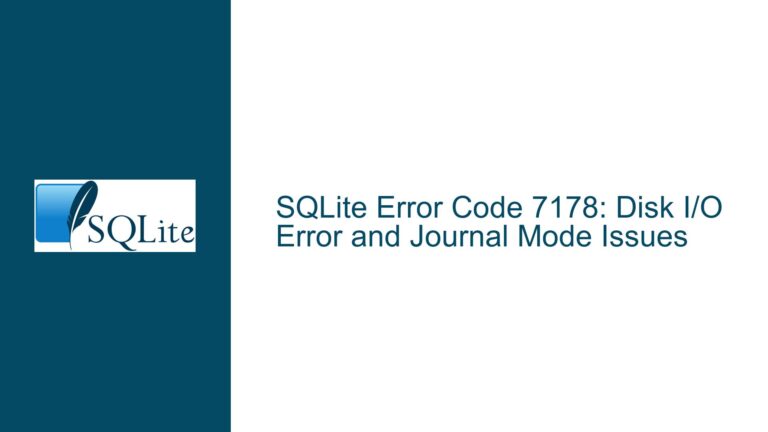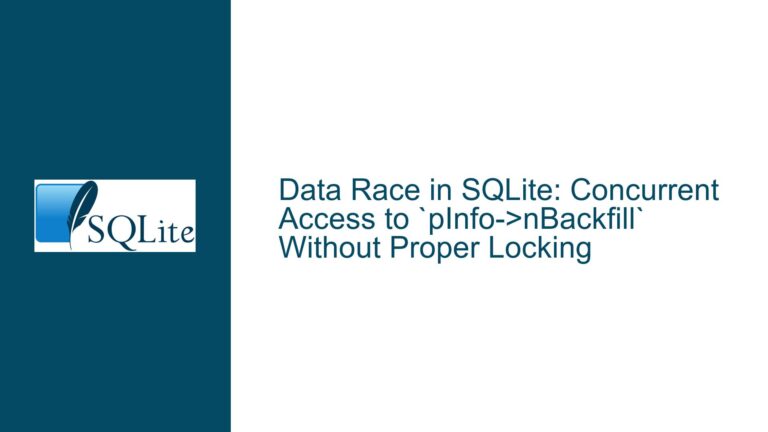SQLite Database Integrity Check Taking 350x Longer Than Usual
Database Integrity Check Duration Spikes Unexpectedly
When running a routine integrity check on a set of SQLite databases, one of the databases took nearly two hours to complete, whereas it typically takes around ten seconds. This anomaly occurred only once, and subsequent checks returned to normal execution times. The database in question is larger than the others but not significantly so, and the same number and type of records are added daily, ruling out unusual fragmentation as a cause. The system in use is a Debian-based environment, and no other databases experienced similar delays during the same period. The integrity check involves running the following PRAGMAs: INTEGRITY_CHECK, FOREIGN_KEY_CHECK, and JOURNAL_MODE. Additionally, a custom Tcl procedure is used to check if the database is locked, which it was not during the incident.
The integrity check process is part of a nightly batch job that has been running smoothly for about a year. While there are minor variations in execution times, they typically do not exceed a factor of four. This particular instance, however, was an outlier, with the check taking approximately 350 times longer than usual. The issue did not recur in subsequent runs, leading to the assumption that it might have been a transient problem. However, understanding the root cause is crucial to prevent potential future occurrences, especially in a production environment where such delays could have significant implications.
Disk Errors, I/O Bandwidth, and Cache Issues
Several factors could contribute to the sudden spike in the time taken to perform an integrity check on an SQLite database. One of the primary suspects is disk errors. Disk errors can cause read/write operations to take significantly longer as the system attempts to recover data from bad sectors or retries failed operations. Even if the disk error is transient, it can lead to substantial delays in database operations, especially during intensive tasks like integrity checks.
Another potential cause is I/O bandwidth contention. If another process or application was consuming a large portion of the available I/O bandwidth at the same time as the integrity check, it could have slowed down the database operations. This is particularly relevant in environments where multiple databases or applications share the same storage subsystem. However, in this case, the fact that other databases checked during the same period did not experience similar delays suggests that I/O bandwidth contention might not be the primary issue.
Cache-related issues could also play a role. If the system’s cache was full or otherwise compromised, it could have forced the database to rely more heavily on disk I/O, which is significantly slower than memory-based operations. This could explain why the integrity check took much longer than usual. However, cache issues are typically transient and would not explain why the problem occurred only once.
Lastly, while the database in question is larger than the others, it is not unusually large, and the daily addition of the same number and type of records makes significant fragmentation unlikely. Fragmentation can slow down database operations, but it usually results in a more consistent performance degradation rather than a one-time spike.
Diagnosing Disk Health and Optimizing SQLite Performance
To address the issue of a one-time spike in the integrity check duration, a systematic approach is required. The first step is to diagnose the health of the disk. Tools like smartctl can be used to check the SMART status of the disk, which provides information on various attributes such as read error rates, seek error rates, and reallocated sectors. Running a long self-test using smartctl can help identify any underlying disk issues that might have caused the delay.
If disk errors are detected, the next step is to back up the data immediately and consider replacing the disk. Even if the disk error was transient, it is a sign that the disk may be failing, and continued use could lead to data loss. If no disk errors are found, the next step is to monitor I/O bandwidth usage during the integrity check. Tools like iotop can be used to identify processes that are consuming a large amount of I/O bandwidth. If such processes are found, their impact on the database operations can be mitigated by scheduling them at different times or allocating more resources to the storage subsystem.
Optimizing SQLite performance can also help prevent similar issues in the future. One approach is to use the PRAGMA journal_mode setting to configure the journal mode. The WAL (Write-Ahead Logging) mode, for example, can improve performance by allowing reads and writes to occur simultaneously. Additionally, ensuring that the database is properly vacuumed can help reduce fragmentation and improve performance. The VACUUM command can be used to rebuild the database file, which can help if fragmentation is suspected.
Another important consideration is the use of appropriate transaction levels. The BEGIN IMMEDIATE transaction used in the Tcl procedure to check if the database is locked is a good practice, as it ensures that the transaction is started immediately, reducing the likelihood of conflicts. However, it is also important to ensure that transactions are kept as short as possible to minimize the time during which the database is locked.
Finally, implementing a robust backup strategy is crucial. Regular backups can help mitigate the impact of disk errors and other issues that could lead to data loss. SQLite provides several options for backing up databases, including the .backup command and the sqlite3_backup API. These tools can be used to create consistent backups of the database, which can be restored in the event of a failure.
In conclusion, while the one-time spike in the integrity check duration might have been a transient issue, it is important to investigate the underlying causes to prevent future occurrences. Diagnosing disk health, monitoring I/O bandwidth, optimizing SQLite performance, and implementing a robust backup strategy are all essential steps in ensuring the reliability and performance of SQLite databases in a production environment.






